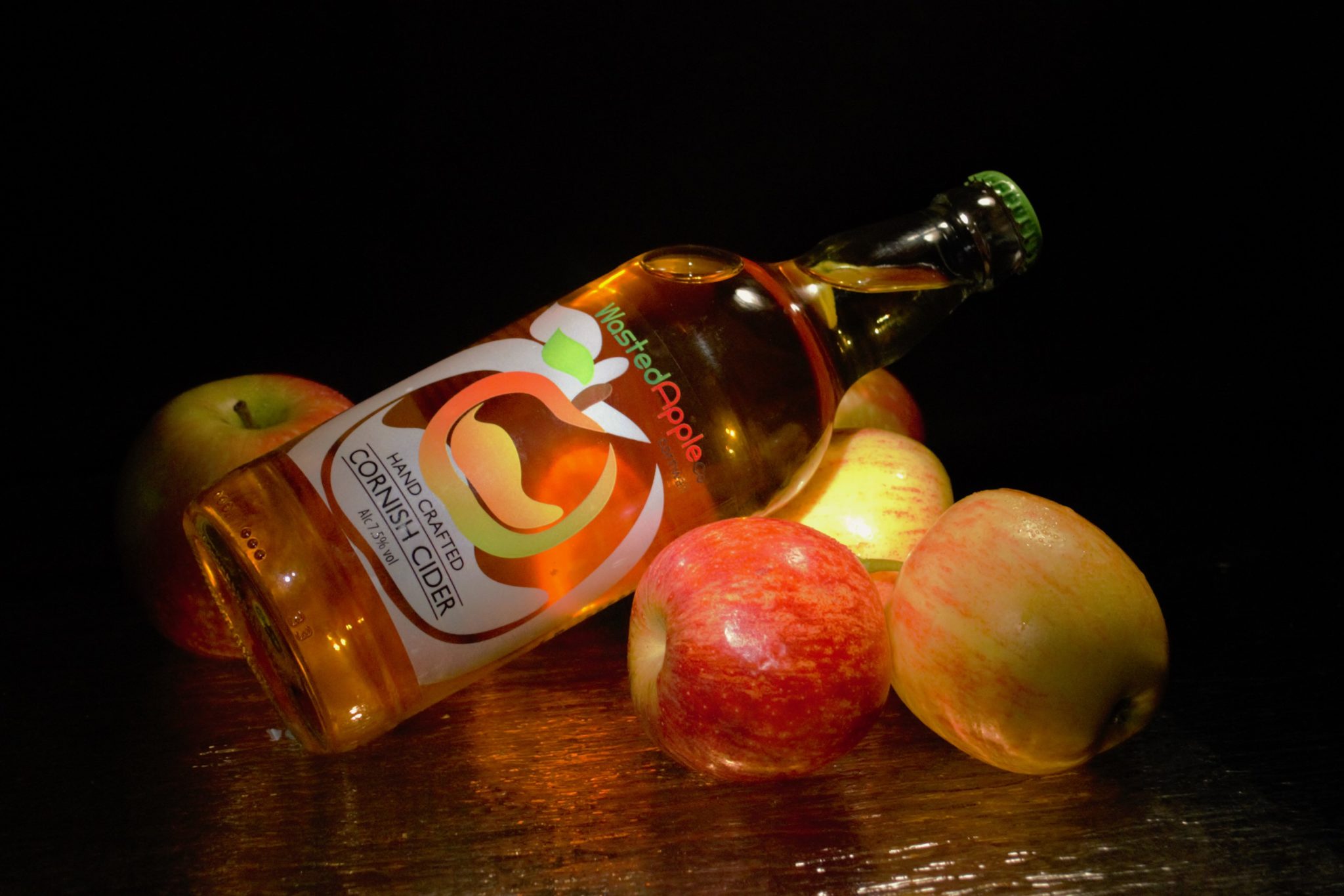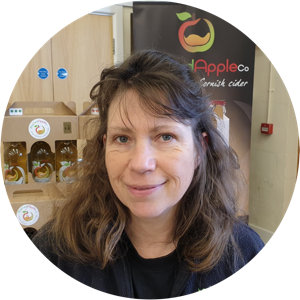This article was made in collaboration with the MASHED! magazine which brings their readers tonnes of inspiration, interviews, recipes, tips, and tricks as well as awesome stuff to help and inspire your homebrewing journey. If you are new to homebrewing, they’ve definitely got your back, the magazines are Available in print and online. This article talks about Wasted Apples’ Mark journey with homebrewing and his tips and tricks.
Based in St Austell, Wasted Apple makes handcrafted traditional Cornish cider and award-winning apple juice. You get a sweet double whammy with Wasted Apple cider: the exceptionally good end product, including their fantastic ‘Herit- age’ range made from Cornish varieties of cider apples; and then there’s the environmental benefit. Because Wasted Apple makes their ciders and juice from apples that would have otherwise gone to waste. (Wasted Apple – get it?) They collect unwanted apple from gardens and orchards all across Cornwall, thereby reducing food miles and helping the environment. They have also launched a UK-wide directory on their website to help connect people with spare apples with those who can turn them into something tasty. We catch up with Mark Rudge, founder and owner of Wasted Apple, to pick his expert brain about cider making.
What makes craft cider stand out over mainstream versions?
Craft cider is a very different product from large scale mainstream commercial ciders. The most common comment we get with people tasting our cider is: ‘it’s so appley!’. That’s because it is made with real apples, picked in season. Due to the volumes that are produced many mainstream ciders are made from apple syrup, which is bought in, fermented within 6 weeks, bottled and then sold. And some makers have apparently started using a flavoured apple powder to produce their cider. The apples for our cider are picked and pressed in the autumn, fermented through winter, bottled in spring, and the cider is then usually ready for sale late summer or in the autumn. Our cider is neither pasteurised nor carbonated meaning the cider is still alive and continues to mature. If you took one of our ciders and added some sugar, the fermentation process would fire up again and continue to produce alcohol.
Do different apples produce different results?
Yes, different apples produce very different flavours. Take a look at our Heritage Range (wastedapple.co.uk) produced for the first time this year. These are made using specific varieties of apples or small blends. The tastes of all three are quite different. However, for high-quality craft cider, a blend of apples is the norm: a mix of Sharp, Bittersharp, Bittersweet and Sweet.
Do you make flavoured ciders using hops or with other fruit?
I’ve experimented with flavoured ciders but to sell commercially they are classed as ‘made wine’, and therefore attract a duty charge. We have made strawberry, blackberry, rhubarb and elderflower syrups which we have sold separately, so you can add the syrup to the dry cider
and ‘make your own. This has worked well, especially as the cider is still alive and loves the introduction of a sugar-packed syrup it froths up as soon as it’s poured in. I’ve not tried hops yet…although it’s clearly a trend that is setting in!
What are the biggest cider making challenges that face a homebrewer?
There are many challenges to cider making for the homebrewer but most can be overcome in one way or another. We would always encourage people to give it a go! For me, there are four key things that are well worth remembering:
Cleanliness: The cleaner your equipment is the less likely you are to get infections that will result in a poor cider.
Air: The cider needs air when it starts to ferment, but it needs to be excluded after that. Air is the enemy of a good cider: avoid it unless you are after vinegar.Time: With cider you need to be patient: sometimes when it’s fermenting and sometimes when it’s maturing. Most problems you encounter will be overcome with time and patience. Accuracy: If you are bottle conditioning then measure very carefully how much sugar you put in
the bottle. We learnt our lesson here long before we starting producing commercially: a hastily estimated sugar solution added to a cider batch resulted in an over-excited cider firing a bottle clean through a kitchen cupboard door!
Questions from the Mashed Magazine community:
“What’s the best: natural yeast or bought yeast? I’ve used both but they always turn out differently.” @KevinLambertIn my experience, it depends on what you want. If you want a fast fermentation that will roughly do what you expect, keep with the commercial yeasts. If you want to experiment, and perhaps develop some more interesting flavours, go for natural. If you are just starting then go for a commercial and learn about the process first. “I’ve made a lot of Wyder (wine strength cider) – it’s so time-consuming even with
a 10L grinder and press.
How do you stop the juice from going brown while you’re pressing more? Is that oxidation like with beer-making?” @JakeyChops
The amount of alcohol in cider comes from the level of sugar in the apples. For high strength cider, you need to either use very sweet apples or add sugars to the juice. The oxygen turns the apple juice brown, and the colouration is an important part of the final product. If you want to avoid any brown add a small amount of vitamin C. This will prevent oxidation, but it may also produce a hazy cider.
Harvesting tip from Wasted Apple:
When do you know that your apples are ready for harvesting? You may think it’s when some of the apples have started dropping from the tree. Well, this is not necessarily true! Unripe apples cannot be used in cider making, so be sure to check your apples are ripe before picking the whole crop. Here’s how: Pick an apple from the tree and cut it in half. The pips will tell you if the apples are ready or not. If the seeds inside are very small and white, the apples won’t be ready for several more weeks. If the seeds have started turning brown, but are still quite light, you’ll need to wait another couple of weeks. When the apple is ripe and ready the seeds will be plump and dark brown.
“Don’t be fooled by some windfalls!”
Follow the Mashed Magazine at: @mashedmagazine
Downloads:


